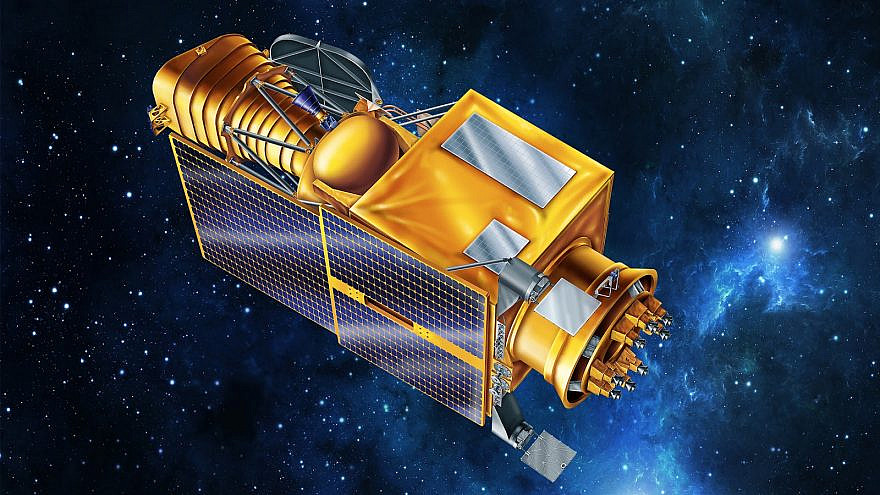The telescope will enter geostationary orbit in 2026, where it will scan the universe for events such as stars colliding or exploding and the impact of giant black holes.

The future Ultraviolet Transient Astronomy Satellite (ULTRASAT). Credit: The Weizmann Institute of Science.
(JNS) Israel’s first space telescope will enter geostationary orbit in 2026, where it will scan the universe for events such as stars colliding or exploding and the impact of giant black holes, the Weizmann Institute of Science announced Tuesday.
The Ultraviolet Transient Astronomy Satellite, or ULTRASAT—which will be launched as part of a newly signed partnership between NASA and Israel’s Ministry of Innovation, Science and Technology—is expected to revolutionize scientists’ ability to detect and analyze transient events in the universe such as neutron star mergers and supernova explosions, the institute said.
It is the premier project of the Israel Space Agency in the ministry and the Weizmann Institute of Science in Rehovot.
According to the agreement, NASA partnered in ULTRASAT and will provide the launch opportunity, Flight Payload Adapter and other launch-related needs for the project. The Israel Space Agency will deliver the completed observatory to the Kennedy Space Center in Florida for the launch.
ULTRASAT will cost about $90 million to build.
ULTRASAT’s unprecedented field of view of 204 square degrees (square degrees are used to measure parts of a sphere) represents a 100-fold leap in the extra-galactic volume accessible to scientists for the discovery of transient sources compared to observatories on Earth, the institute said. Moreover, ULTRASAT will measure ultraviolet light that cannot be measured from Earth, and provide the scientific community with real-time alerts on transient events.
“The combination of these unique capabilities will allow scientists to observe the universe as never before, shedding light on some basic questions, such as the origin of heavy elements in nature and the impact of giant black holes on their environments. It will enhance research on a wide variety of astronomical subjects, including supernovae, variable and flare stars, active galaxies, the source of gravitational waves and accretion of stars by massive back holes,” the Weizmann Institute said.
Uri Oron, director of the Israel Space Agency, said, “Groundbreaking science calls for cutting-edge technology. The Israel Space Agency is proud of the cooperation with NASA as a direct example of the strong partnership between the agencies and of the Israeli space industry’s technological effort involved in the development of the telescope.”
Dr. Mark Clampin, director of the Astrophysics Division in the Science Mission Directorate at NASA headquarters in Washington, said, “We are proud to join this partnership, an international effort that will help us better understand the mysteries of the hot, transient universe. ULTRASAT will give the global science community another important capability for making new observations in the nascent field of Time Domain and Multi-Messenger astrophysics programs.”
“This is a breakthrough project that places Israel at the forefront of global research,” said Prof. Eli Waxman, an astrophysicist at the Weizmann Institute and ULTRASAT’s head researcher. “Leading international bodies such as NASA…have joined this Israeli-led project as partners, having recognized its scientific significance. It’s a science-driven partnership.”
The mission’s high scientific profile is expected to strengthen Israel’s space industry and status in the international arena thanks to the partnerships that the mission cements with leading agencies and industries in the field.


 Whatsapp
Whatsapp





